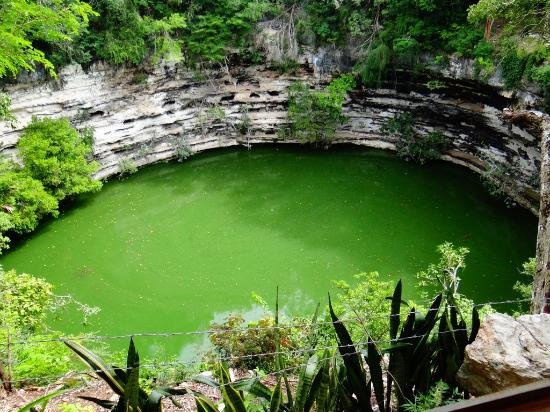 FOTO ORIGINAL DEL CANAL
FOTO ORIGINAL DEL CANAL
By me
Partió desde Andalucía hacia el Nuevo Continente don Rodrigo de Oviedo, el 17 de junio de 1527. Zarpó siendo un adolescente y llevaba la herrería como oficio. Su objetivo: encontrar la tan ansiada fuente de la juventud por los Reyes Católicos, quienes buscaban preservar su amor hasta la eternidad. Siguió hasta la Florida. En territorio Mexica, le reconoció un hombre al que había rescatado años atrás y que contaba con un plan para volverse rico. Herminio conocía de los cenotes sagrados de Chichen Itzá, y su plan era bajar a ellos durante la noche para llevar consigo todo el oro y las piedras preciosas que los mayas llevaban arrojando al mismo desde tiempos remotos. En la bajada don Rodrigo encontró una muchacha viva, cubierta de joyas, lanzada por los mayas como sacrificio, se había enamorado y con ella habría de formar su familia. Le llamó Inés María Itzá, nombre que perduraba hasta nuestros tiempos y que fue la clave para una cuantiosa herencia de más de 300 años de antigüedad, cobrada ya para la segunda mitad del siglo XX.
Don Rodrigo de Oviedo left Andalusia for the New Continent on June 17, 1527. He set sail as a teenager and carried blacksmithing as a trade. Their objective: to find the long-awaited fountain of youth for the Catholic Monarchs, who sought to preserve their love until eternity. He went on to Florida. In Mexica territory, he was recognized by a man whom he had rescued years before and who had a plan to get rich. Herminio knew of the sacred cenotes of Chichen Itzá, and his plan was to go down to them during the night to take with him all the gold and precious stones that the Mayans had thrown into it since ancient times. On the way down, Don Rodrigo found a girl alive, covered in jewels, thrown by the Mayans as a sacrifice, he had fallen in love and with her he would form his family. He called her Inés María Itzá, a name that lasted until our times and that was the key to a large inheritance of more than 300 years old, already collected for the second half of the 20th century.
 FOTO ORIGINAL DEL CANAL
FOTO ORIGINAL DEL CANAL
By me
Como asegura la contraportada de la novela que les traigo, de la autoría de la escritora cubana Teresita Gómez Vallejo, del año 2006 y de sobra está decir que les recomiendo al 100 por ciento:
«Cuando una novela se asienta en un conjunto de realidades, hechos más que sabidos y demostrados, para desplegar entonces la fantasía de lo que fue o de lo que pudo ser la vida de las mujeres y hombres de esas realidades, entonces los límites entre la historia y la literatura desaparecen. Este es el primer mérito de Hombre de palabra.»
As the back cover of the novel that I bring you assures, authored by Cuban writer Teresita Gómez Vallejo, from 2006 and it goes without saying that I recommend 100 percent:
"When a novel is based on a set of realities, facts more than known and proven, to then unfold the fantasy of what the life of the women and men of those realities was or could be, then the limits between history and literature disappear. This is the first merit of Man of his word. "
 Cenote sagrado Chichén Itzá
Cenote sagrado Chichén Itzá
Fuente: TripAdvisor
Una viva mezcla de amor y aventura en un contexto tan real, que da paso a la incertidumbre de la veracidad de sus personajes.
Hola, hemos elegido este post para ser comisariado por la comunidad MIDI Cuida(Hive). Te invitamos a unirte a nuestra comunidad que estudia las palabras de Dios y también ganar alguna recompensa haciendo nuestras reacciones a ella. Podemos consultar este enlace https://peakd.com/c/hive-182074/trending
Congratulations @anibalbestard! You have completed the following achievement on the Hive blockchain and have been rewarded with new badge(s):
Your next target is to reach 20 posts.
Your next target is to reach 800 upvotes.
You can view your badges on your board and compare yourself to others in the Ranking
If you no longer want to receive notifications, reply to this comment with the word
STOPTo support your work, I also upvoted your post!
Check out the last post from @hivebuzz:
🙌🙌🙌🙌